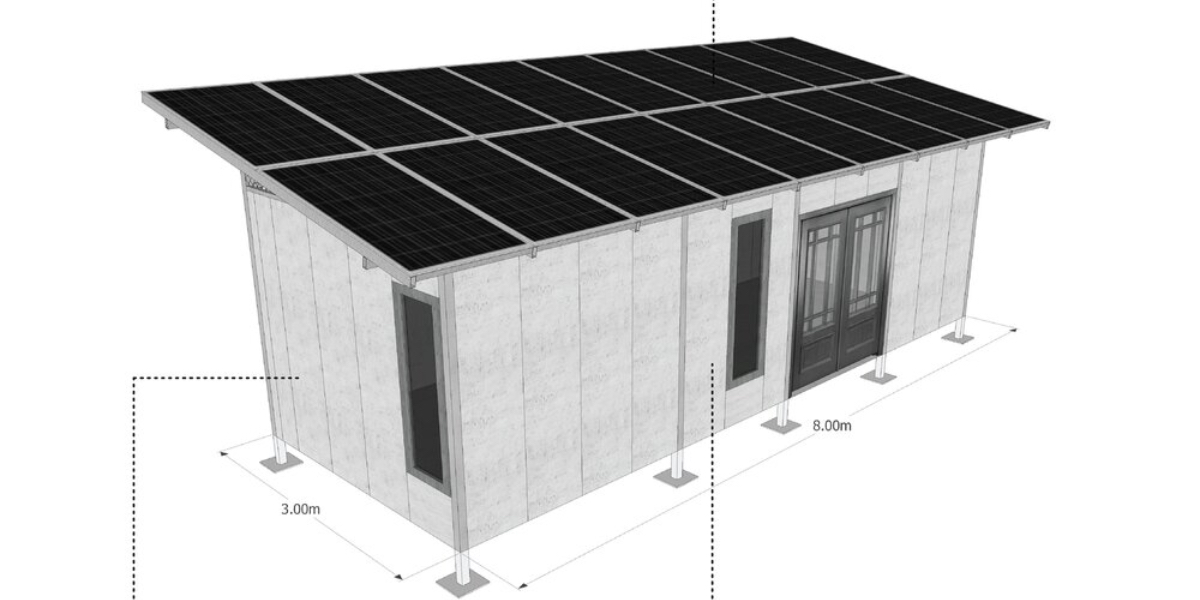AWARD YEAR
2023
CATEGORY
Home
GOALS
Good Health & Well-being, Decent Work & Economic Growth, Industry, Innovation & Infrastructure, Sustainable Cities & Communities, Climate Action
KEYWORDS
Affordable/sustainable housing, Self-sustaining, Shelter, homes, Materials
COUNTRY
Kenya
DESIGNED BY
Needlab
WEBSITE
https://www.needlab.org/house-for-all
House for All
Dignified, resilient housing for the next 3 billion.
How does it work?
The initiatives aim is to provide one of the basic human needs- shelter. Using principles of a circular economy, the initiative uses local materials (low carbon) and creates employment and sustainable development for the region.
The shelter is a self-sufficient house with solar panels to generate power. Vertical gardens are used to grow food which helps to make the inhabitants independent. By working within local communities, those living within the region are able to learn how to build these homes and build resilience within their own right, to sustain their livelihood with dignified homes they've built themselves using locally sourced materials, but also to maintain a dignified life through what these shelters provide in independence.
Why is it needed?
By 2025, more than 1.6 billion people around the world will lack access to affordable, adequate and secure housing. 40 % of the areas that need to be urban by 2030 do not yet exist.As the global population increases, urban areas around the world will boom, and that means more and more buildings are needed and will be built. The UN Desa, 2017 report predicts that by 2050, the global population will increase by 2.2 billion people and 70% will dwell in cities.
Currently, buildings and construction industry amount for nearly 40% of global CO2 emissions. Unless we rethink the built environment, our cities will become increasingly unsustainable, un-affordable, and socially unequal.
How does it improve life?
? Design: Innovative, viable solutions.
? Mobilize: Local/ regional contractors to build.
? Use: Grounded, sustainable material for construction.
? Conduct: Skill development workshops for youth to increase the employable workforce.
? Retain: Improve the local economy.
? Share: opensource the design and encourage others to build.
House for all (HFA)” is a transdisciplinary based design methodology that combines primacy of science and practice to sustainably solve the societal problem of secondary and tertiary homelessness.







